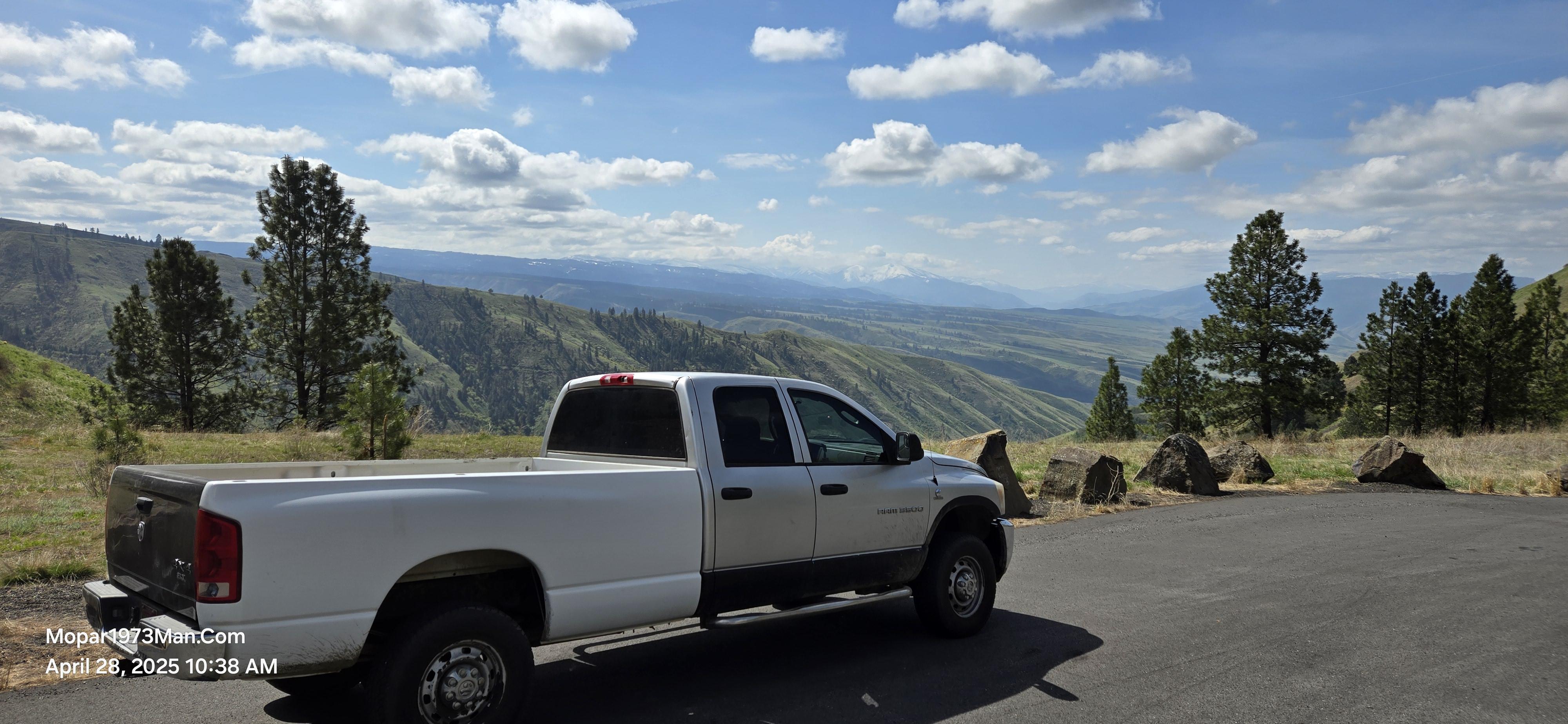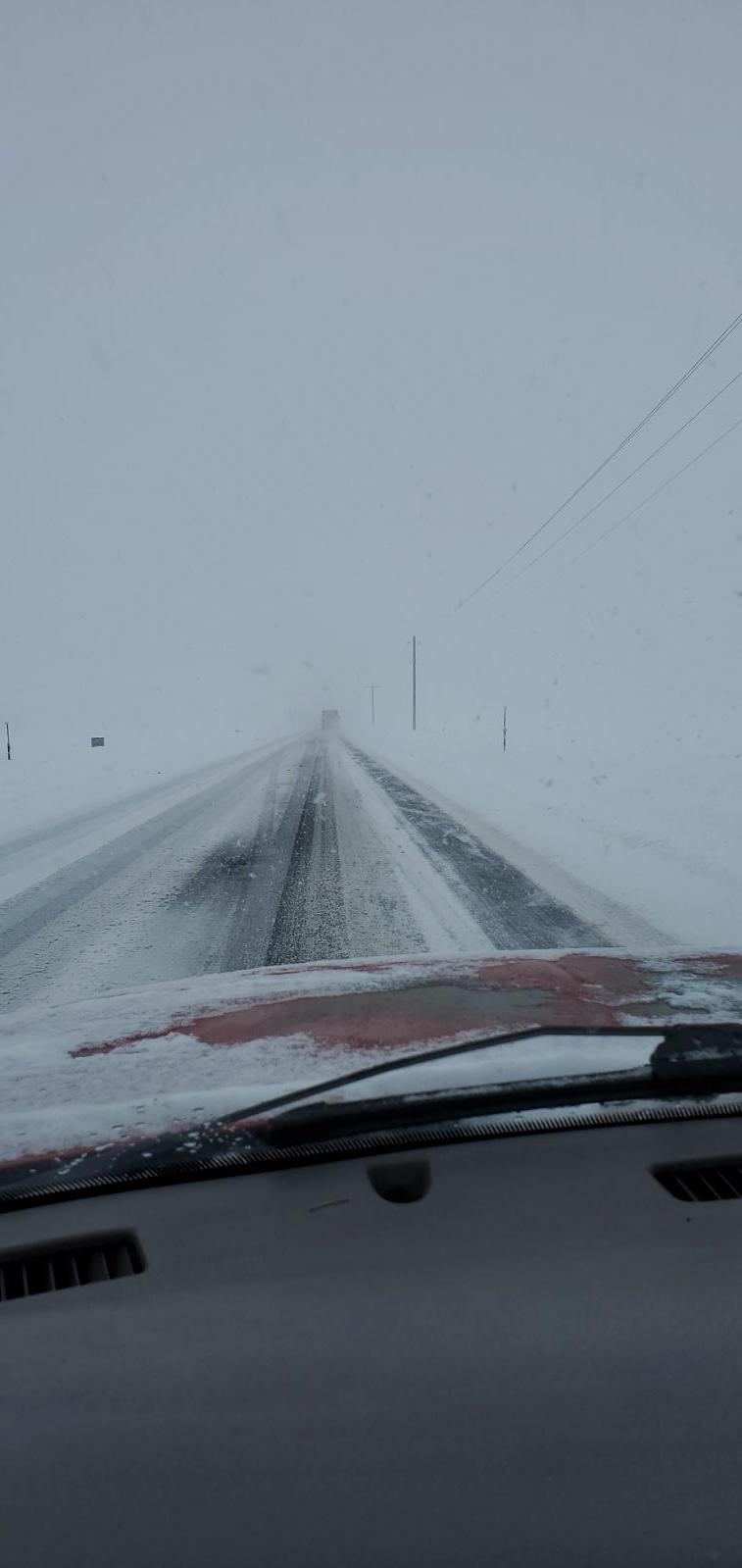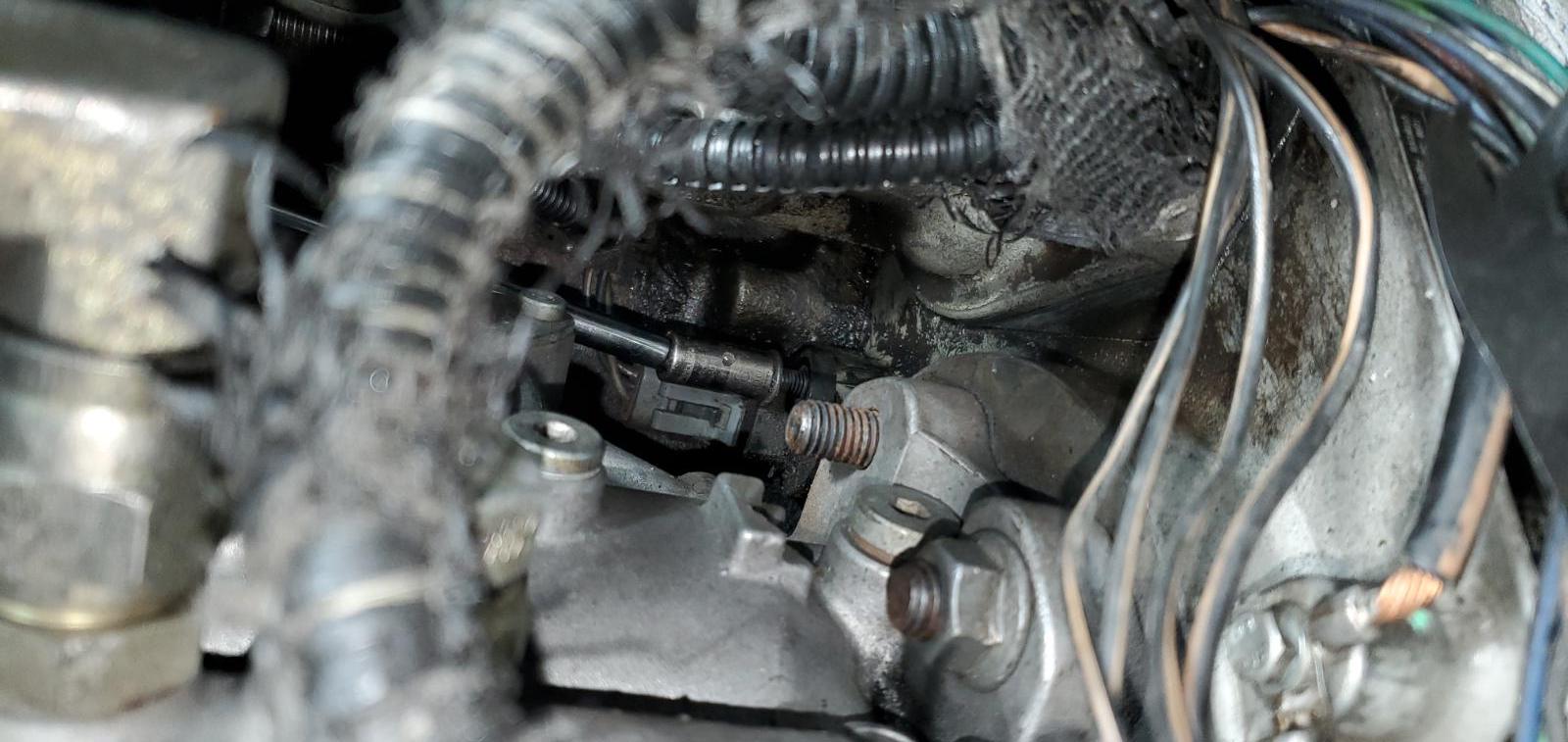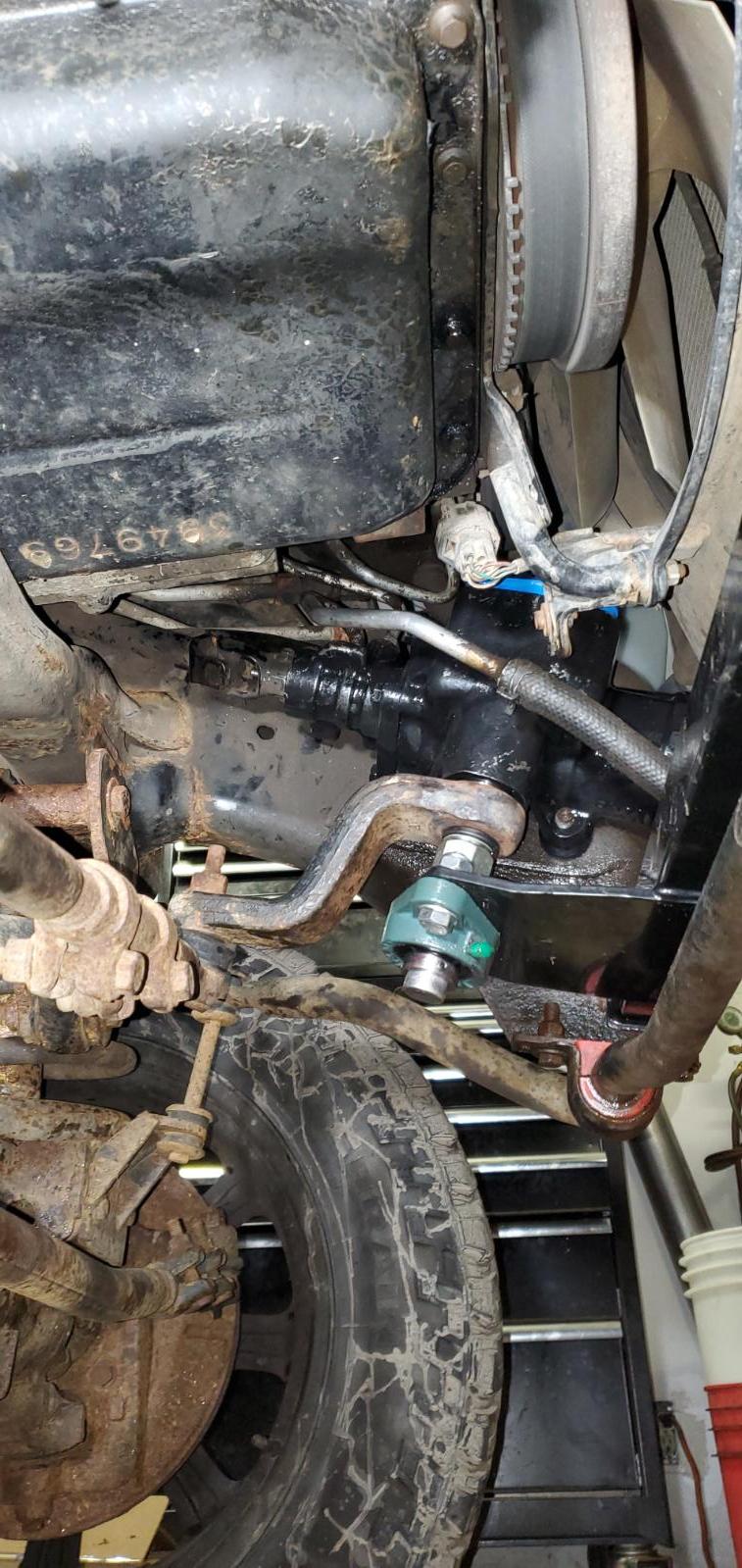
Everything posted by Mopar1973Man
-
P0341 Cam Sensor
Oh another note of what you'll notice is the alternator will not charge at all when the P0341 code is actually occurring. When the tach signal is dropped the ECM can keep the engine going but the alternator will shut down because of the lack of tach signal to turn on the field leads. I did notice the voltage was falling and not charging then POP the ECM seen signal again and started charging. I didn't put two and two together till I was on the road today and figured that out.
-
Bucking on warm starts
Take all that junk out and do the W-T ground wire mod. I'm only 11mV AC for alternator noise.
-
Hey.... Just Morning Coffee and Wired Up Chat........
Rusted linkage how about that? The salt has done its damage. It the fact you cant make a solid gear change and bouncing back out. After shooting PB blaster all over the shift linkage and shifted a few times it helped. Still you need to shift to 4WD LO first then back up to 4WD HI that way it completes the pull. I did crawl under and look yeah its in sad shape being all the highway miles driven and salt on the highways.
-
P0341 Cam Sensor
Not bad to install after you wrap your mind around the idea of blind install. You got to do it totally by feel. My mistake was trying a Allen socket first and it rather hard to insert that into a hex bolt. After figuring it out its not that hard. My only problem is my hands are pretty large compare to most so fitting and articulation of my fingers to move the sensor in place is a bit tough. Electrical tape is my go to socket binding stuff. Just thick enough that it sticks and put the sticky side towards the socket. 32*F here at the house but New Meadows was about 22*F. This morning 17*F with a wind chill of 10*F. I'm heading to Lewiston to restock the house (food and supplies). Brief buck or shudder. Then normal again, the CEL comes on right afterwards. NAPA replacement is exactly the same everything. Same shell design, same violet colored o-ring. Just about $60 dollars for the sensor.
-
P0341 Cam Sensor
Well after 429k miles my cam sensor gave up. That being said let me show you my 104 mile trip to Council ID for a cam sensor... I get home to change the sensor but stuffing you hand below the VP44 in 32°F weather you start to have problems. I got smart and rolled the truck in the shop and plugged in the block heater. About this time @JAG1 calls... wasted a good hour or so on the phone BSing with him. After that I ran down to the shop and proceeded to change the sensor. Now knowing what I did for my buddy Russ his was an Allen bolt. Mine happens to be an 8mm socket. Grabbed an 8mm 1/4 socket and an 1/4 inch extension that is a wobble tip. Reached in and loosen the bolt. Yeah the photo is upside down. Yeah I'm missing a nut on my VP44. Back to the sensor, after getting the bolt loosen I grabbed a magnet to capture the bolt. Then reaching in and grabbed the wires and pulled the sensor out of the hole. Then just unplug. Now you can plug the new senor in or not. Install the sensor back in its hole. You can feel for the location of the tab. Turned back into proper placement. Now take a small bit of electrical tape put it over the socket or Allen key now this will wedge the bolt to the socket or Allen. Install the bolt. If you didn't plug in the sensor now you have to reach in with long needle nose to plug in the sensor. Best to plug in before installing the sensor. TOTAL TIME: 30 MINUTES
-
Fuel tank questions
In my book, RV275 injectors are still basically a stock injector for the Cummins ISB RV engine. The difference is a mere +40 HP (Standard output) or +30 HP (for High Output engine). RV edition of Cummins ISB was a 275 HP engine. Hence the injector name. Back in the day we only had a handful of tuners that could add extra fuel and limited smoke control and no real timing control. This made it hard to build a truck up without smoke. Like myself, I started with stock injectors and the Edge Comp tuner will do very well. Now when I stepped up to RV275 it became smokey just a bit because of lack of timing control and fuel map control basically Edge Comp just adds to the stock maps for only stock injectors Then the +50 HP smoke pretty good. The problem is more you increase the injector size the more you need to advance timing for the larger droplets to convert from liquid to vapor. Hence the smoke problem. Now with Quadzilla Adrenaline, you can control both fuel and timing. I've gone all the way up to +150 HP injectors popped at 320 bar now and no smoke. This is because of the amount of timing I running versus the size of injectors.
-
No electrical - ZIP. Up a creek without a paddle!
Exactly correct. Now this would occur with the old Carter lift pump and stock plumbing because on a 2 line pump the it would return to the inlet side being there is no where to return to the fuel tank. There was several video of older carter capable of cavitation. Between plumbing restrictions, vacuum on the small stock lines and high flow injectors it was very possible.
-
Hey.... Just Morning Coffee and Wired Up Chat........
Garage is a more or less collections program always you to showcase what you collect. Originally the first program was called the Garage and then the author updated more and changed the name. Now under the "Modification Tab" you can list every one of your modifications and then show pictures for every one of them. As soon as I get a change to clean up the truck and do some repairs I will relist my "Modifications" which is long. Why did I drop the Garage Database is because when I set it up it was based on good look large photos. Now I'm looking for good look photos but more compact size for mobile. Half of my server issue is photos taking too long to render on the screen when some of the photos where as big as 11 MB. Now its limited size will help with mobile timings. As for me I tried to take the day off and didn't exactly turn out to be a day off. But being both of my trucks have issues. I know the 2002 Dodge has error codes but haven't had a chance to go out and play in the snow to check that one. The 1996 Dodge now has no 4WD drive something in the shift linkage is screwed up or rusted or sticking because I can shift to 4WD LO but if I shift to 4WD HI then it will not stay in gear and grinds. Yeah I get another working weekend... Oh goodie!
-
p1690 Can't find what's wrong
- need help deciding on a turbo
Uh... WOW!- 2005 Dodge Ram on 35 inch tires being set up RIGHT!
I took it out for a test drive yesterday late when the snow let up. I was surprised that the steering is very very close to centered on the wheel. Steering is MUCH MUCH tighter in the steering wheel. Barely move the steering wheel and it darts in that direction. I see this so very often where someone starts thinking I want bigger tires and wheels. Go out and just invest in the tires and wheels and never upgrade anything else on the truck and wonder why the steering sucks. Like this truck there isn't enough caster still because of the fixed lower control arms. Should have adjustable track bar next and adjustable lower control arms and this would be a rock solid set up. No I don't hate oversized tires... I think they look cool but there is a price to doing the modification properly. Then you not stuck in the position bad mouthing Dodge for crappy steering. Just the other two mod with the track bar being adjustable will impact the thrust angle, then the lower control arms if you can't get enough caster then it will not self center like it should so now you get saw steering swinging back and forth. Then the other half is proper final gearing, if your running 3.55 or 3.42 gears you shouldn't be up sizing tires till you change the gearing. Yup its snowing big time here...- Power steering again
Blow guns and compressed air are a good friends to have around.- Injectors
I get it but technology has improve leaps and bounds since then... But I get it most people right now just don't have extra funds to play with trucks.- Hey.... Just Morning Coffee and Wired Up Chat........
Should use it I made it so you can keep all your mods photos and truck photos in one spot to make it easier to free up storage space for message attachments.- 2002 Cummins - Weird issues
Weird part I've not had a bit of time to even look at my truck yet. I driven to Riggins, ID this morning and no issues. I'm going to pull the ECM plug and the PCM plugs and hit them with di-electric grease being the problem is very random. I've not seen the volt gauge weird out again either. No other error codes. I've got a list of things to do for my truck. Brand new seat covers. I bought them 4 months ago and not had the time to change them yet. Transfer case needs to be serviced Front and rear axles need to be serviced Parking brake need to be repaired completely. (Cables, shoes, hardware, ???) Door hinges are wearing out and need replacing. Cracked dash that I've been chasing with Super Glue. Fix my OBDII plug that randomly works and then it don't. Valve Lash optional but been while since the last time.- Torque Converter Acting Weird
Are you using ATF+4 transmission fluid? I know that if you run the older ATF in the transmission it will lock harsh and some times shudder a bit as it locks up.- Injectors
Bad part is the timing from that stack isn't the greatest nor adjustable. Being the Smarty is without timing and the Edge is just stack a few degree on the stock map which doesn't mean its set up correctly. That was on of the biggest problems with my Edge Comp as the injectors got bigger the timing was way off and the smoke was getting worse, as I added bigger injectors. Now I'm all the way to 150 HP injectors and zero smoke at all. I completely consume all fuel. That's even with a wiretap on the pump...- 2nd Quadzilla In 2 Years, Anyone Else Have Problems?
Any body bolt will work as long as it stays tight. Like my Quadzilla is grounded to the hood hinge bolt. The bolt back out and created all kinds of hell. Tighten the bolt and everything works again. No. You don't need to ground directly to the battery. Like my truck I've got a mere 0.003V (3 mV DC) Drop from Battery NEG post to the body or block anywhere. This is while the truck is running with all loads going.- Hey.... Just Morning Coffee and Wired Up Chat........
@Dieselfuturesorry dude your going to have ot rebuild your garage page again. I started the garage database over... What I was playing with today... Blue Top Steering and Steering box brace...- need help deciding on a turbo
Just for information... Quadzilla Adrenaline +150 HP DAP injectors (7 x 0.010) popped at 320 bar HX35/40 Hybrid Turbo (60/60/12) I've just been playing with my tune and spread out my timing a bit more. I know I'm most likely high in drive pressure but, power wise 2WD on dry pavement just about the time the wire tap and my CANBus climb together to the end of the fuel map the tires break loose and the smoke I'm emitting isn't exhaust smoke but tire smoke. I'd love to step up to a 62/68/12 as a upgrade where I'm at. I've already talked to Jacob Kidd and they have a series of turbo that is ready for my exhaust brake. Small requirement I want to keep my exhaust brake being my brake pad life is now past 200k miles.- Hello from CT!
Welcome to the crazy family of Dodge Cummins owners. Well you finally into the light so we all can work together! Thank you for the kind words it keeps me focus on build this up even more. Lately between weather (snow) and jobs I'm jumping back and forth working both sides web and shop.- 2005 Dodge Ram on 35 inch tires being set up RIGHT!
I've got a client up in McCall nice looking 2005 Dodge Ram but steering is pretty poor. I've done the first step of pulling the steering box and sending it off to @Blue-Top Steering and had him rebuild it completely. Then I asked the owner to pick out a brace for the steering box. This truck came to me with some serious steering slop. The steering box was leaking both the input and output shaft seals. Here we go, look for that Blue Top box peaking out... Take notice there is a gap to the pitman arm and the body. Look closer you see I had to heat it up and wedge it off the old box. Some nit wit ran the nut in with a impact and crushed the arm to the body making it impossible to use a pitman arm puller. I've got a good amount of torque on it now and still nice pull gap to be had. I was planning on some test driving and re-centering the steering wheel but the snow is coming down hard so I'm going to delay till the weather improves. I typically run down the road to Pinehurst frontage road and I can point it straight and turn the drag link longer or shorter to center the wheel. I'm not going to lay in snow and blowing wind today... Owner can come to get it for another week. A bit of slack for me I've got another due to be done today.- Injectors
125 HP industrial Injectors aren't bad. I'm running +150 HP DAP Injectors (7 x 0.010) popped at 320 bar. With a Quadzilla you can control the fuel better and make better use of the power. Without causing head damage as your case the cracks in the head..- Hey.... Just Morning Coffee and Wired Up Chat........
That's why I cleaned up the Garage area and made it to be a photo gallery for your truck stuff. Limited out the photos there so you can stuff way more truck photos... As for working on my truck again didn't happen... Uuuugggghhhh! Ended up working on customers truck because of deadlines. Still need to get the repairs done for my own trucks. One day soon I' would like to have the time to stuff a clutch in the 2006 Dodge Ram and make it roll and drive. Still haven't got the volt gauge issue figure out yet either.- Injectors
Even after 350k miles when I pulled my head to do valve guides and the head gasket my head was crack free. The only thing I can think of someone has been running without a EGT gauge. Yes a stock power truck can exceed 1,400°F easy. I've seen it done many times. Just because its stock power doesn't mean it not going to run hot. - need help deciding on a turbo







